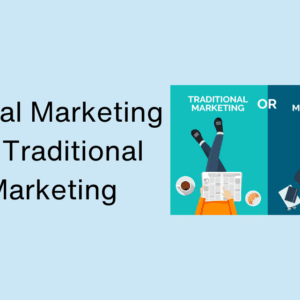Introduction
Search Engine Optimization (SEO) is a cornerstone of digital marketing, playing a pivotal role in enhancing online visibility, driving organic traffic, and maximizing conversions. In today’s competitive digital landscape, understanding the significance of SEO and its integration within broader digital marketing strategies is essential for businesses seeking to thrive online. In this tutorial, we’ll delve into the multifaceted role of SEO in digital marketing, exploring its key components, best practices, and strategies for success.
Understanding the Importance of SEO in Digital Marketing
Before delving into the specifics, let’s grasp the importance of SEO in the context of digital marketing:
- Visibility and Rankings: SEO helps businesses improve their visibility and rankings in search engine results pages (SERPs), making it easier for users to find their websites, products, or services online.
- Organic Traffic: By optimizing their websites for relevant keywords and phrases, businesses can attract organic traffic from search engines, resulting in higher-quality leads and conversions.
- Credibility and Trust: High search engine rankings convey credibility and trustworthiness to users, as they perceive top-ranking websites as authoritative sources of information or reputable brands.
- Cost-Effectiveness: Compared to paid advertising, SEO offers long-term, cost-effective results, as businesses don’t have to pay for each click or impression generated through organic search.
Key Components of SEO in Digital Marketing
To grasp the role of SEO in digital marketing, let’s explore its core components and functionalities:
On-Page SEO:
On-page SEO focuses on optimizing individual web pages to improve their search engine rankings and visibility. Key elements of on-page SEO include:
- Keyword Research: Identifying relevant keywords and phrases that align with user intent and search queries.
- Content Optimization: Creating high-quality, informative content that incorporates target keywords naturally and provides value to users.
- Meta Tags Optimization: Optimizing meta titles, meta descriptions, and header tags to improve click-through rates and relevancy in search results.
- URL Structure: Ensuring clear, descriptive URLs that include target keywords and reflect the content of the page.
Off-Page SEO:
Off-page SEO refers to activities conducted outside of a website to improve its search engine rankings and authority. Key elements of off-page SEO include:
- Link Building: Acquiring high-quality backlinks from authoritative websites through strategies such as guest blogging, influencer outreach, and content promotion.
- Social Media Engagement: Leveraging social media platforms to share content, engage with audiences, and amplify brand visibility and reach.
- Online Reputation Management: Monitoring and managing online reviews, mentions, and brand sentiment to maintain a positive online reputation and credibility.
Technical SEO:
Technical SEO focuses on optimizing the technical aspects of a website to enhance its crawlability, indexability, and overall performance. Key elements of technical SEO include:
- Site Structure: Ensuring a clear and logical site structure that facilitates navigation for users and search engine crawlers.
- Page Speed Optimization: Improving website loading speed through optimizations such as image compression, browser caching, and minimizing server response time.
- Mobile Friendliness: Ensuring that the website is optimized for mobile devices and provides a seamless user experience across different screen sizes and devices.
- Schema Markup: Implementing schema markup to provide search engines with structured data about the content on the website, enhancing visibility in rich snippets and knowledge panels.
Strategies for Integrating SEO into Digital Marketing:
To leverage the full potential of SEO within digital marketing strategies, businesses can adopt the following strategies:
Content Marketing Alignment:
Align SEO efforts with content marketing strategies by creating high-quality, optimized content that addresses user needs, solves problems, and provides valuable information.
User Experience Optimization:
Prioritize user experience by designing intuitive navigation, mobile-friendly layouts, and fast-loading pages to enhance engagement and reduce bounce rates.
Local SEO Optimization:
Optimize for local search by claiming and optimizing Google My Business listings, obtaining local citations, and targeting location-specific keywords to attract local customers.
Data-Driven Decision Making:
Utilize data analytics and SEO tools to track key performance metrics, identify trends, and make data-driven decisions to optimize SEO strategies and maximize results.
Continuous Learning and Adaptation:
Stay updated on industry trends, algorithm changes, and best practices through continuous learning and experimentation to adapt SEO strategies accordingly and stay ahead of the competition.
Conclusion:
SEO is a fundamental component of digital marketing, serving as the backbone of online visibility, traffic generation, and brand authority. By understanding the multifaceted role of SEO and integrating it strategically within broader digital marketing strategies, businesses can unlock the full potential of their online presence and achieve sustainable growth in today’s competitive landscape. From on-page optimization and link building to technical SEO and content marketing alignment, prioritizing SEO empowers businesses to enhance their online visibility, connect with their target audience, and drive meaningful results that contribute to long-term success. With a commitment to best practices, continuous improvement, and staying abreast of industry developments, businesses can harness the power of SEO to thrive and prosper in the digital era.
Also Read: A Comprehensive Tutorial Decoding the Digital Marketing Funnel








This Post Has One Comment